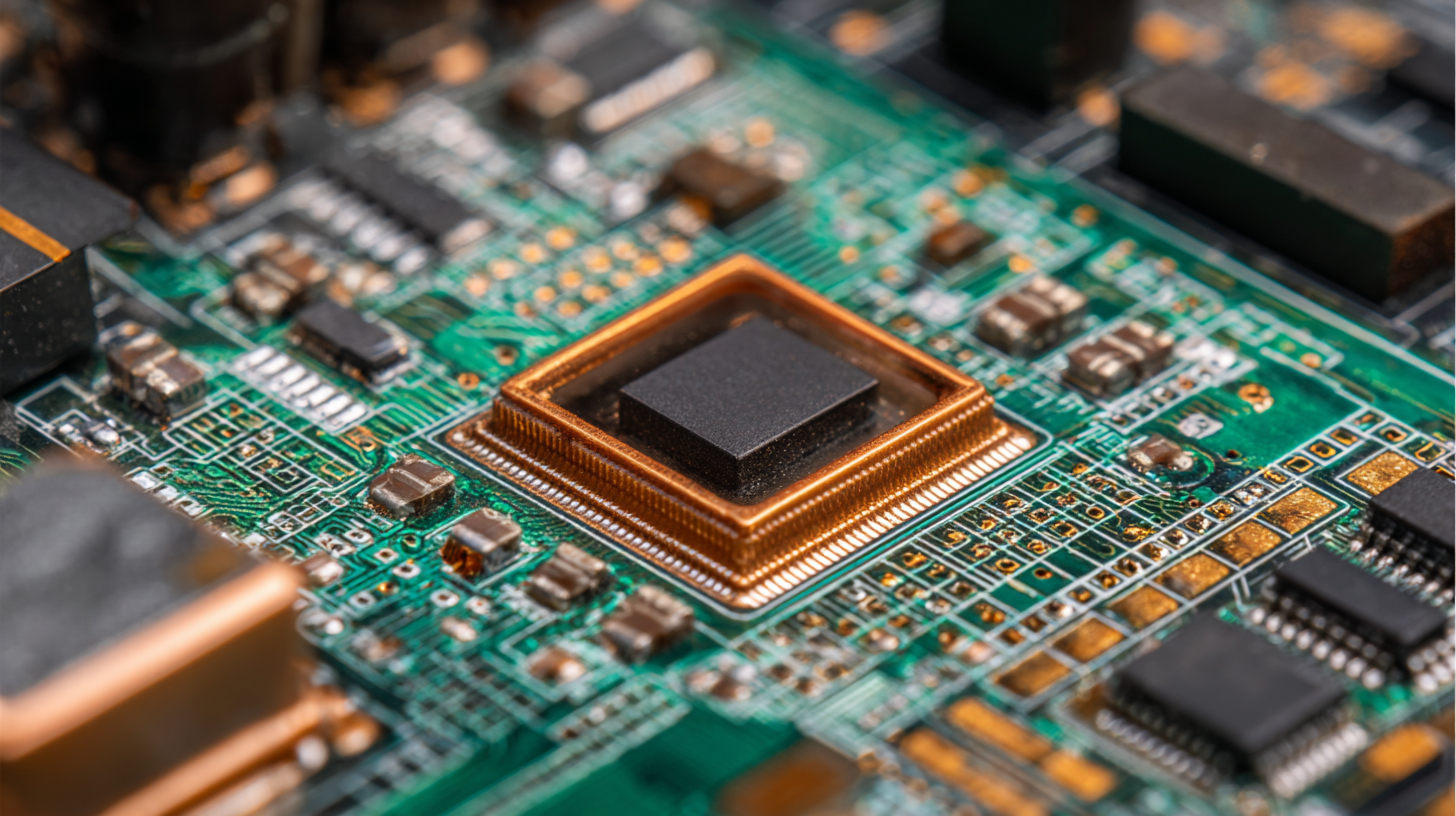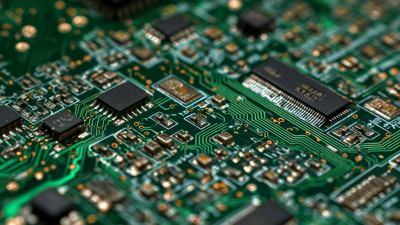Let Us Know How We Can Help. We Are Your Dedicated Solutions Provider.
Maximizing Efficiency in PCB Assembly Through Advanced Automation Techniques for 2024
As the demand for electronic devices continues to surge, optimizing the pcb assembly process has become paramount for manufacturers aiming to enhance productivity and reduce costs. In 2023, the global printed circuit board (PCB) market was valued at approximately $70 billion, with projections indicating a growth rate of around 5% annually through 2028 (Industry Insights Report).

In this context, advanced automation techniques stand out as a transformative approach to address the complexities of modern pcb assembly. By integrating robotics, machine learning, and real-time data analytics, companies can significantly reduce assembly time and improve precision, which are vital in today's fast-paced market.
Moreover, studies show that automation can increase output efficiency by up to 40%, showcasing its critical role in meeting the escalating consumer demands of 2024 and beyond. Embracing these advanced techniques not only streamlines operations but also positions manufacturers to remain competitive in a rapidly evolving landscape.
Table of Contents
[Hide]
Advancements in PCB Assembly Automation: Key Statistics and Trends for 2024
The PCB assembly industry is poised for significant transformation in 2024, driven by advanced automation techniques that promise to enhance efficiency and reduce production costs. According to a recent industry report by Mordor Intelligence, the global PCB assembly market is expected to grow at a compound annual growth rate (CAGR) of 5.7% between 2024 and 2029. This growth is largely attributed to technologies such as AI-driven automation, which enable quicker adjustments to production lines and optimize workflow, reducing time by up to 30% per project.

Tips for manufacturers looking to leverage these advancements include investing in modular automation systems, which can be easily upgraded as technology evolves. Moreover, adopting real-time data analytics tools can facilitate better decision-making on the shop floor, ensuring that assembly processes are both efficient and cost-effective. The integration of stereo lithography and robotics for precision assembly is also showing promise; a survey by IPC indicates that over 60% of manufacturers are considering robotic solutions for their production lines by the end of 2024.
As the industry embraces these trends, companies should also focus on training their workforce to adapt to these automation technologies. The ability to harness sophisticated machinery effectively is crucial; according to a report from Market Research Future, organizations that invest in employee training see a 20% increase in productivity, underscoring the importance of human expertise in a highly automated environment.
The Impact of AI and Machine Learning on PCB Assembly Efficiency
The integration of AI and machine learning into PCB assembly is poised to significantly enhance efficiency and output quality in 2024. In the design phase, machine learning algorithms can optimize layouts and predict potential design flaws before production begins. This proactive approach reduces the likelihood of defects and accelerates the overall design process, allowing manufacturers to deliver products faster. Additionally, deep learning techniques can analyze historical data to refine production workflows, thus ensuring that engineers can make informed decisions that translate to cost savings and improved operational efficiency.
In the manufacturing phase, AI-powered quality control systems are revolutionizing how defects are detected and handled. Utilizing computer vision and advanced algorithms, these systems can perform real-time inspections, identifying issues and alerting operators to problems that might otherwise go unnoticed. This shift not only enhances accuracy but also minimizes downtime associated with manual inspections. As manufacturers embrace these advanced automation techniques, the synergy of AI and PCB assembly will lead to unprecedented levels of performance, reinforcing the industry's move towards smarter and more efficient production processes.
Maximizing Efficiency in PCB Assembly Through Advanced Automation Techniques for 2024 - The Impact of AI and Machine Learning on PCB Assembly Efficiency
| Automation Technique | Impact on Efficiency (%) | Initial Setup Cost ($) | ROI Period (Months) | Key Technologies Used |
|---|---|---|---|---|
| AI-driven Inspection Systems | 30% | 50000 | 8 | Computer Vision, Neural Networks |
| Robotic Pick and Place | 40% | 70000 | 6 | AI Algorithms, Automation |
| Automated Soldering Systems | 25% | 60000 | 10 | Machine Learning, Sensors |
| Data Analytics for Process Optimization | 20% | 30000 | 5 | Big Data, AI Tools |
| End-to-End Automation Solutions | 50% | 150000 | 12 | Robotics, AI Integration |
Integrating Robotics: Boosting Output and Reducing Errors in PCB Assembly Lines
The integration of robotics in PCB assembly lines marks a significant leap towards enhancing operational efficiency. By employing advanced robotic systems, manufacturers can automate repetitive tasks that were traditionally performed by human operators. This not only expedites the assembly process but also ensures a higher level of precision and consistency in the production of printed circuit boards. The use of robotic arms equipped with sophisticated vision systems enables real-time quality control, effectively identifying and correcting errors that could compromise the final product.
Furthermore, the deployment of robotics in PCB assembly lines mitigates the risk of human error, which is a common challenge in manual assembly processes. Robots can execute tasks with unparalleled accuracy, reducing the likelihood of defects and the need for costly rework. This increased reliability contributes to improved overall output, allowing companies to meet growing market demands and maintain competitive advantage. As organizations continue to embrace advanced automation techniques, the synergy between robotics and PCB assembly becomes an essential component for thriving in the rapidly evolving electronics industry.
Cost-Benefit Analysis of Automation Investment in PCB Manufacturing for 2024
In 2024, the landscape of PCB manufacturing is set to be transformed through
advanced automation techniques, which promise not only to enhance operational
efficiency but also to significantly impact the cost structure of production.
A thorough cost-benefit analysis reveals that investing in automation can yield
substantial returns, especially as the global factory automation market is projected
to expand at a CAGR of 11.1% from 2025 to 2030.
This growth trajectory suggests that manufacturers embracing automation are likely
to position themselves favorably in an increasingly competitive market.
The implementation of these advanced technologies in PCB assembly
not only addresses labor shortages and supply chain disruptions but also
optimizes resource allocation and reduces production times.
As the Internet of Things continues to integrate into manufacturing processes,
companies can expect to see improved data analytics capabilities driving decision-making.
This investment in automation is essential for maintaining competitiveness and ensuring
sustainable growth in the dynamic environment of manufacturing where adaptability
is key to success.
Real-Time Data Analytics: Enhancing Decision-Making in PCB Assembly Processes
Real-time data analytics is revolutionizing the PCB assembly processes by enhancing decision-making and operational efficiency. In 2024, the integration of advanced analytics technologies allows manufacturers to monitor assembly lines continuously, providing valuable insights that drive immediate adjustments. These insights not only optimize workflow but also predict potential failures before they occur, thereby reducing downtime and ensuring a more reliable production schedule.
As the IoT in manufacturing market continues to expand, reaching an estimated valuation of $141.18 billion in 2025, the relevance of real-time data analytics becomes even more pronounced. Manufacturers can leverage this growth to implement smart applications powered by AI, which facilitates predictive maintenance and improved quality control. By harnessing these advanced technologies, PCB assembly lines can operate at unprecedented levels of efficiency, ensuring that businesses remain competitive in an increasingly automated industry landscape.

Related Posts
-

Ultimate Guide to PCB Design and Assembly Best Practices for Beginners
-

Innovative Board Design Techniques for Enhancing User Engagement in Digital Platforms
-

Understanding the Future of Printed Circuit Technology in Everyday Devices
-

Understanding Cable and Wire: A Comprehensive Guide to Their Types and Uses
-

Understanding the Future of Electronic Board Assembly in Modern Technology
-

Unlocking the Future: How Cable Assemblies Power Modern Technology and Innovation
